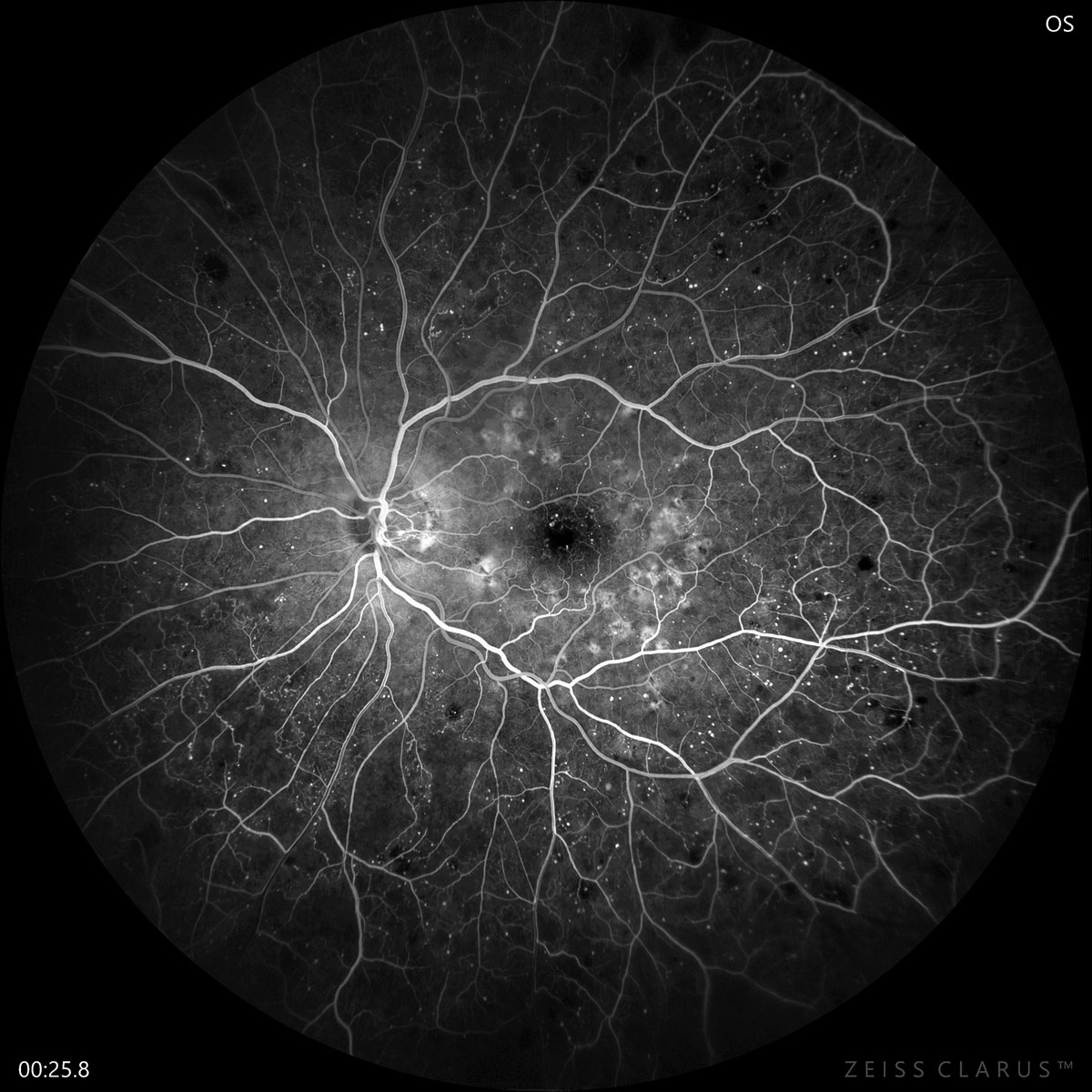 |
This UK-based study found that biennial screening for patients with diabetes (as opposed to annual screening) would have delayed diagnosis by one year for 56.3% of individuals with sight-threatening DR and 43.6% with PDR. Photo: Jay Haynie, OD. Click image to enlarge. |
In several countries, including the UK, patients with diabetes are only recommended to attend annual eye exams if they are at high risk of sight loss (if any diabetic retinopathy is present), while biennial screenings are recommended for those at low risk (no DR present). However, a new study found even for patients at low risk, forgoing annual screenings could result in delayed detection of sight-threatening DR and proliferative DR (PDR), especially among those of Black ethnic origin.
The study analyzed data from individuals in North-East London with diabetes and no DR based on two prior consecutive screening visits (n=82,782). Thirty-seven percent of the cohort was white, 36% was South Asian and 16% was Black. Up to eight years of follow-up were examined and used to calculate annual incidence rates of sight-threatening DR and PDR. Next, researchers determined delays in the identification of either condition that would’ve occurred if two-year screening intervals had been used.
Over a mean of 4.3 years, 1,788 incident cases of sight-threatening DR and 103 cases of PDR occurred. Breaking this data down by ethnicity, the study authors reported the following incidence rates of sight-threatening DR per 100-person-years: 0.55 for South Asian, 0.34 for white and 0.77 for Black people.
The researchers determined through their analysis, “Biennial screening would have delayed diagnosis by one year for 56.3% of individuals with sight-threatening DR and 43.6% with PDR,” they noted in their paper, recently published in the British Journal of Ophthalmology. Notably, Black people were more than twice as likely to have delayed disease identification with biennial exams; cumulative rates of delayed sight-threatening DR per 100,000 persons were 1,904 for Black people, 1,276 for South Asian people and 844 for white people.
Along with ethnicity, age also affected the incidence of delayed sight-threatening DR and PDR. Individuals younger than 45 years faced the highest number of delayed sight-threatening DR events, which the researchers point out is concerning given their trajectory for longer exposure to disease. On the other hand, older patients had significantly more delayed PDR events. Although the incidence of PDR was low in this study, the authors suggest it would be appreciable in a larger screening population.
“Given these sociodemographic differences, we have shown that introducing biennial as opposed to annual diabetic eye screening could worsen sight loss among certain sociodemographic groups because of delayed detection of sight-threatening DR and PDR, potentially adding to healthcare inequalities,” the researchers surmised in their paper.
Artificial intelligence has merit as a remote screening tool for patients with diabetes to reduce the need for in-person annual visits, a practice that Scotland already employs. However, until AI technology is licensed for use in other countries, the researchers conclude that recommending biennial screenings in place of annual visits—even for patients with no diabetic retinopathy—may have a detrimental effect in the grand scheme by potentially delaying cases of sight-threatening or proliferative retinopathy, especially in young and Black populations.
Olvera-Barrios A, Rudnicka AR, Anderson J, et al. Two-year recall for people with no diabetic retinopathy: a multi-ethnic population-based retrospective cohort study using real-world data to quantify the effect. Br J Ophthalmol. October 24, 2023. [Epub ahead of print]. |

